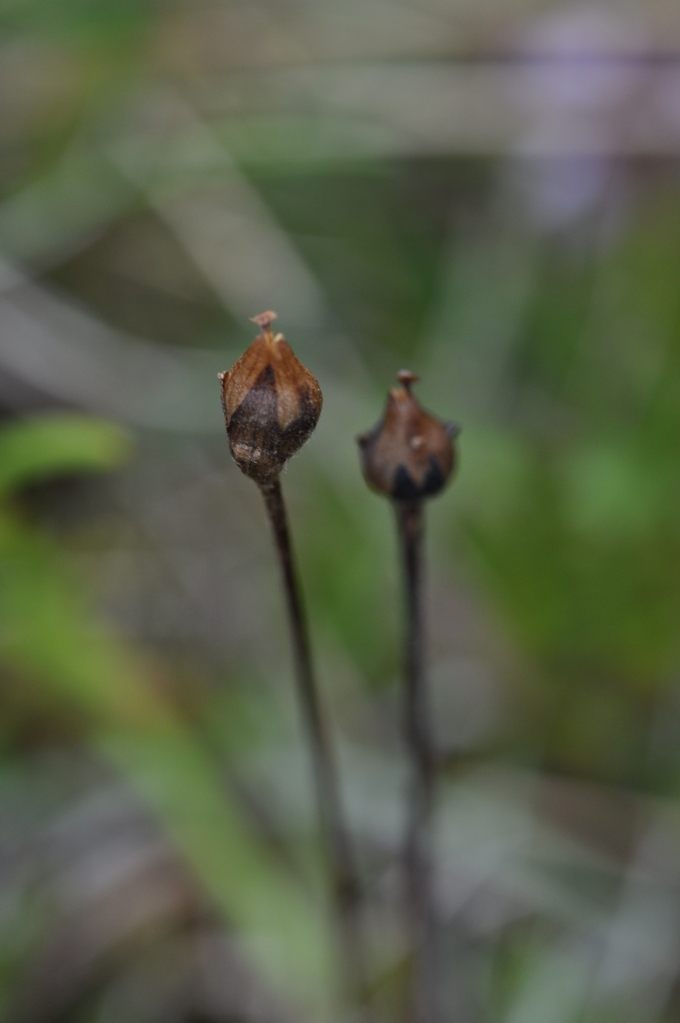flower
#AdventBotany – Getting stuffed at Christmas: Sage

There are many more gastronomically interesting options available at Christmas time, but I’m still always drawn to the reassuringly traditional sage and onion stuffing. Nowadays, in addition to stuffing poultry, sage is most commonly used to flavour other meat dishes (particularly sausages in British cuisine). However, its scientific name, Salvia officinalis, shows its heritage as a medicinal herb. The species name ‘officinalis’ comes from the Latin word officina referring to a monastic storeroom for herbs and medicines. Sage was recommended for all kinds of ills, from wounds and sore throats to hair care and fertility problems. There’s something about this suggestion for ‘Great Sage’ from Gerard’s Herball, however, which seems especially appropriate for overindulgent holidays:
‘Sage is singular good for the head and braine, it quickeneth the sense and memory, strengtheneth the sinews….’ John Gerard, 1597
This year, perhaps an extra bit of sage with my turkey could give me the edge over my competitors in any after-dinner Christmas boardgames!

Sage is in the mint family (also known as the Lamiacaea). Many of the plants in this family are aromatic, but sage also shows some other very recognisable characteristics such as a square stem, leaves in opposite pairs and flowers with bilateral symmetry with the five petals fused to give the appearance of an upper and a lower lip. Originating from the Mediterranean, sage enjoys plenty of sunshine and doesn’t like to get too wet over winter, but is quite tolerant of low temperatures. The furry leaves help to keep insect pests at bay, but cultivars which flower freely are very attractive to pollinating insects such as honeybees and many different bumblebees.
The sage flower has an interesting mechanism for getting pollinated. As pollinator enters the flower looking for nectar it has to push past the base of the stamens which are blocking the way. This acts as a lever, so that the stamens tip forwards and leave pollen on the back of the insect. When it visits another flower, the insect can brush against the female stigma depositing the pollen. Some bees have learnt to cheat, however, and you can find small holes at the base of flowers where a bee has bitten through and drunk the nectar from the outside.

Specimen of the day – Tamarind
by Jemma
Tamarind is a tropical, frost-sensitive, long-lived, busy tree that can reach over 20 metres in height. It is an evergreen tree but Tamarindus indica’s bright green, fern-like leaves can fall off if exposed to prolonged periods of hot, dry weather. The sweet-scented, five-petal flowers are yellow with pink/red streaks and resemble small orchids. The tree produces edible, pod-like fruit that start off green in colour before maturing to reddish-brown. The fruits seeds are surrounded by a sticky sweet pulp that is edible. Tamarind trees will produce fruit for 50-60 years before declining productivity.

Image taken from http://commons.wikimedia.org/wiki/File:Tamarindus_indica_(Emli)_flowers_W_IMG_9164.jpg
The genus Tamarindus, to which this tree belongs, is a monotypic taxon. This means that the genus contains a single species: T. indica.
Tamarind has been used by humans as far back as the ancient Greeks in the 4th century BC.

The mature fruit of the tamarind tree has a tangy sweet flavour and is used in cooking. It is particularly associated with Asian and Latin America cuisine. The green immature fruit is also used in cooking but for different purposes as it has a sour taste. The young pod is often used in Worcestershire and HP sauces. Both mature and immature plants contain a number of chemicals that are beneficial to human health, including tartaric acid, Vitamin B and calcium.

Image taken from http://www.karthikexim.com/Tamarind.aspx
As well as its culinary applications, Tamarindus indica has been used in traditional medicines throughout Southeast Asia. It has been used to combat fevers, aid digestive problems and sooth sore throats. In a recent study, it has been suggested that tamarind may delay the progression of skeletal fluorosis by increasing fluoride excretion. Skeletal fluorosis is a bone disease caused by excessive accumulation of fluoride in the bones so, by assisting with the expulsion of this compound, tamarind could slow down the rate at which fluoride accumulated. Though promising, further research is needed to confirm these results.
The wood of the tree is a bold red colour and durable, making it a popular choice of wood in carpentry (particularly in for furniture and flooring).

Image taken from http://commons.wikimedia.org/wiki/File:Tamarind_tree.jpg
Stratgies for low fertility soils
As a member of the pea family, the Nootka lupin has root nodules for nitrogen fixation. We’ve also seen other peas, clovers and vetch plants capable of fixing nitrogen as we’ve travelled around Iceland.

Carnivorous plants, however, have a unique way of gaining nutrients which are not available in the soil. The butterwort (Pinguicula vulgaris) is quite common in a lot of the damp environments that we’ve visited. The succulent leaves are covered with tiny glands which secrete fluids containing digestive enzymes. Small insects are trapped on the sticky surface of the leaf, and are digested by the enzymes. The fluid is then absorbed back into the leaf along with essential nutrients such as nitrogen and phosphorus which have been released from the insect corpse.

Common butterwort has a pretty purple flower held on a long stalk to keep pollinating insects away from the danger of the leaves. At this time of year plants have mature seed capsules.

However, as well as producing seed, the Common butterwort can also reproduce vegetatively, producing offshoots and new plantlets.














